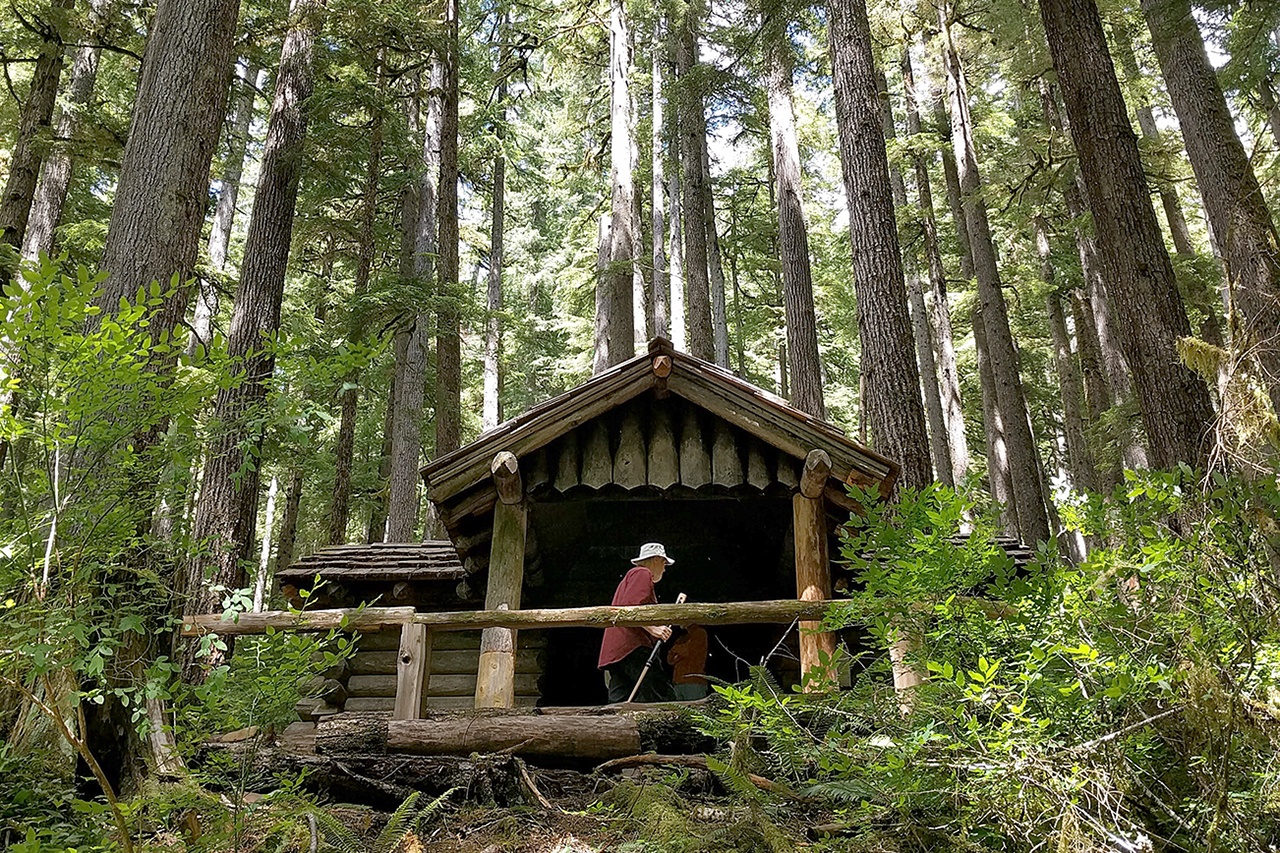A lawsuit pitting the National Park Service and historic preservation interests against those with a strictly “let nature take its course” view on wild land preservation ended Friday, when a federal court ruled the park service has the authority to maintain the historic structures in the Olympic Wilderness.
“We applaud the Court for ruling that the designation of wilderness need not result in the erasure of cultural resources within that landscape,” said Brian Turner, senior field officer and attorney for the National Trust for Historic Preservation. “We believe that Olympic National Park’s historic cabins, trail shelters, and other rustic structures are an enhancement, not a detriment to experiencing the land’s natural beauty and share the court’s opinion that the Wilderness Act and the National Historic Preservation Act can be used in concert to ensure that the area’s heritage is intact for future generations of park users.”
Montana-based Wilderness Watch sued the National Park Service, seeking the court-ordered removal of four trail shelters and a cabin from the park’s wilderness areas. But the preservation groups supporting the National Park Service believe these structures can be managed in accordance with both the National Historic Preservation Act and the Wilderness Act. Wilderness Watch is also on record as calling for the destruction of the Enchanted Valley Chalet, another controversial structure in the area.
When asked if the court decision would impact the status of the Enchanted Valley Chalet, Turner, of the preservation group, said “The park has been proceeding with its planning process for the Enchanted Valley Chalet with the expectation that the court would sanction its process for balancing NHPA and Wilderness Act requirements. It amended its scoping notice last summer, for instance, to include a relocation alternative. Now we hope the park will adopt this alternative, which is its right under the Court’s opinion.” The preservationists submitted their public comment about the chalet in August, which favored the relocation alternative to save the building rather than demolishing it or allowing the changing river bed to sweep it away.
“The decision is a fitting tribute to former Washington Senator Daniel J. Evans,” said Rod Farlee, vice-president of the Friends of Olympic National Park. “Senator Evans was instrumental to the passage of legislation creating the Olympic Wilderness and supported the preservation of its backcountry structures.” Congress passed a law Dec. 9 renaming the wilderness in honor Senator Evans, which President Obama is expected to sign into law. Only 18 of the original 90 shelters in Olympic Wilderness remain today. They are all eligible for or listed on the National Register of Historic Places. The specific structures protected by the court ruling include:
Canyon Creek Shelter, constructed by the Civilian Conservation Corps in 1939 overlooking Sol Duc Falls. This is a T-shaped, one-story log building with a wood-shaked, cross-gabled roof set on a concrete foundation. This shelter is the only CCC-built shelter remaining in the park of three built. It was listed on the National Register in April 2007 for its architectural significance and association with the CCC.
Elk Lake Shelter, 15 trail miles up the Hoh River, is a three-sided 14-foot-by-14-foot log shelter with open front. Shelters at Elk Lake have offered refuge to climbers approaching Mt. Olympus since 1927. This shelter, a replacement built in 1963, represents the last variation of shelter design in the Park.
Wilder Shelter, 21 trail miles up the Elwha River, is a 12-foot-by-12-foot three-sided solid log structure built in 1951 to accommodate backcountry visitors. It was listed on the National Register in 2008.
Botten Cabin, near Wilder, is an 11-foot-by-17-foot log cabin with gabled roof built in 1928 featuring fine, hand-crafted, dovetail-notched corners. The cabin is actively used as an emergency shelter. It was listed on the National Register in April of 2007 for its architectural significance and association with recreational history in the park.
Bear Camp Shelter is a three-sided solid log structure 12-foot-by-16-foot deep built in 1952. It is 16 trail miles up the Dosewallips River.
“The court’s ruling has far-reaching implications,” noted Chris Moore, executive director of the Washington Trust for Historic Preservation. “It enables the National Park Service and other federal agencies that manage America’s wilderness to meet their stewardship mission related to historic and cultural resources in a manner that complies with the Wilderness Act. Washingtonians understand that the historic structures in our backcountry areas complement the Wilderness experience.”


